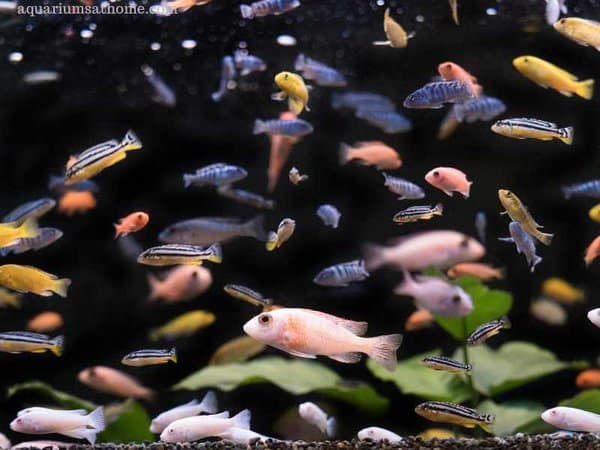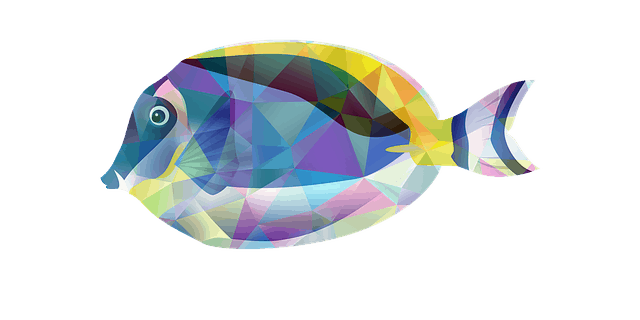As an aquarist, keeping a clean, safe, visually appealing tank is a must. An overcrowded aquarium not only upsets the ecological balance of a contained aquatic environment, but it also makes more work for the hobbyist in terms of cleaning, feeding, and maintenance. So how do you prevent tropical fish from breeding in captivity?
There are 5 things you can do as an aquarium hobbyist to prevent your tropical fish from breeding. First, keep just one gender of fish – males, if possible. Second, choose egg-laying species as opposed to live bearers. Third, adjust the tank conditions and water parameters to make breeding more difficult. Fourth, manage the feeding rate. Fifth, keep different species of fish together in a community tank.
Now that you know the ways to discourage breeding in a contained aquatic environment, let’s explore this topic further. Together, we’ll learn more about each of the 5 inhibitors, how water parameters and tank setup affect spawning behavior, why excessive breeding is a problem in captivity, why over spawning is dangerous for all tank inhabitants, and what to do with unwanted offspring.
Without further ado, let’s ‘dive deeper’ into the subject of preventing unwelcome fish breeding in an aquarium!
How to Prevent Fish from Breeding in an Aquarium?
There are 3 ways to stop your tropical fish from breeding in an aquarium. These include the following:
Keep Only One Gender – Preferably Males
By purchasing only females or only males for your aquarium, you eliminate the possibility of unintended breeding. While females are generally calmer and more compatible in a captive environment, you run the risk of purchasing already-pregnant fish.
On the flip side, multiple males in the same tank can lead to stress, territoriality, and heightened aggression among fish. Regarding hermaphroditic species like clownfish, the dominant male will spontaneously change gender to female and breed with the dominant male in the tank.
Note: when it comes to sexing tropical aquarium fish, males are typically smaller and more colorful than females. Females also tend to be larger and rounder in the mid-section. As well, the anal fin on males is often rod-shaped while the females have a more fan-shaped anal fin.

Opt for Egg-Layers instead of Live Bearers
Most egg-laying fish require precise, ‘just-right’ tank parameters to successfully hatch fertilized eggs. Even under the best conditions, less than 30% of newly hatched fish will survive. In most cases, the eggs or offspring are eaten by the parents and other fish inhabiting the aquarium. Some common tropical egg-laying fish include barbs, danios, rasboras, and tetras.
On the other hand, live bearing fish incubate their young which increases their chances of survival after birth. Typically, live born offspring are born bigger than those that hatch from eggs. This makes them too large for moat aquarium fish to devour. Guppies, mollies, platies, and swordtails are a few examples of popular live-bearing tropical fish.
Adjust the Tank Conditions/Water Parameters
Some species of tropical fish are highly sensitive to fluctuations in water parameters including pH level, temperature, and hardness. As a result, they’re less likely to breed if the tank conditions aren’t optimal or conducive to those of their natural habitat during the ‘breeding season.’
Since most fish breed in warmer temperatures, you can reduce the heat in the tank by a few degrees to discourage spawning. That said, be cautious – deliberately altering the water conditions may not only slow or stop any breeding activity but it can also s make fish more susceptible to disease.
Manage the Feeding Rate
Controlling the amount and type of food you offer your fish will help prevent unwanted breeding. By feeding live bearers less often, you’ll lesson their desire to spawn. Also, feeding rate if directly linked to growth rate so by limiting their meal supply, fish will take longer to reach sexual maturity.
As well, if you provide your omnivorous fish with more plant-based or flaked foods rather than fresh, meat-based foods, you’ll decrease their need to reproduce and force them to scour the tank in search of other food options, including scattered eggs and newborn fry.
Keep Different Species (Community Tank Environment)
A community tank with a variety of different fish will help stop aquarium fish from breeding excessively. Keeping solitary fish with small schools of single-gender fish is your best bet. Also, housing fish that’ll eat the eggs or offspring of other species will help control fry population.

Does Tank Setup Affect Fish Breeding?
Not only the water parameters in an aquarium affect fish breeding. How you setup the tank also plays a role in spawning behavior. If your tank is devoid of plants, rocks, driftwood, etc. then there’s no where for fish eggs to attach after being scattered. That said, for most tropical freshwater fish, greenery is a necessity and not only helps mimics their natural habitat but also helps reduce ammonia levels.
As well, most fish like to hide or retreat to a safe area when mating. In an open aquarium, they’re less inclined to breed. If you have bottom-dwellers and you omit the substrate or use gravel instead of fine-grained sand, they won’t have anywhere to bury their eggs. Take caution, however, as some bottom-dwellers can injure themselves on crushed rock and/or become stressed in the absence of substrate.
What are the Problems with Too Many Fish in an Aquarium?
Excessive fish breeding in captivity can be problematic from an aquarist’s standpoint. Overcrowding caused by unintended breeding and unwanted offspring leads to high stress, increased aggression, and elevated toxic compounds. If not remedied quickly, fish can become ill and die. Too many fish in an aquarium also boosts territoriality which then leads to bullying and/or physical attacks on tankmates.
What to do with Unwanted Aquarium Fish Offspring?
Unwanted fish offspring is an issue for most aquarium hobbyists. Not only does it lead to overcrowding, but it also makes more work for the keeper in terms of cleaning, feeding, and general tank maintenance. If you have too many fry in your tank, you can choose to rehome the youngsters. Place an ad online or in your local newspaper that you have baby fish to give away or sell.
Your other option is to do nothing and just let nature run its course. Many tropical aquarium fish will eat their own offspring while others will eat the young of other species. By not separating the eggs or fry from the adults, you won’t need to take drastic measures to lower the numbers of unwanted hatchings. This may seem cruel, but it’s an inherent trait and necessary in the wild to help prevent overpopulation.
One thing to NEVER do is flush unwanted fish down the toilet or release them into your local ponds, lakes, or streams. Should the fish survive and somehow manage to breed in an unfamiliar, uncontrolled environment, they could become hazardous to native wildlife – disrupting the delicate ecological balance of the aquatic environment is to be expected.
Final Thoughts
To conclude, the 5 things you can do to stop your fish from breeding in captivity include: keeping just one gender – males, preferably; choosing egg-laying fish instead of live bearing fish; altering the water parameters and tank condition to make breeding uneasy; control the amount and type of food offered; keep a variety of different species in a community tank environment.
I hope this article has answered all your questions regarding tropical aquarium fish and how to prevent them from breeding unwantedly. Thanks for reading and best of luck with your aquarist hobby!
Recommended Posts
How to Breed Geophagus Tapajos (Successfully)
Are Silver Dollars Easy to Breed?
What Livebearers can Crossbreed?




